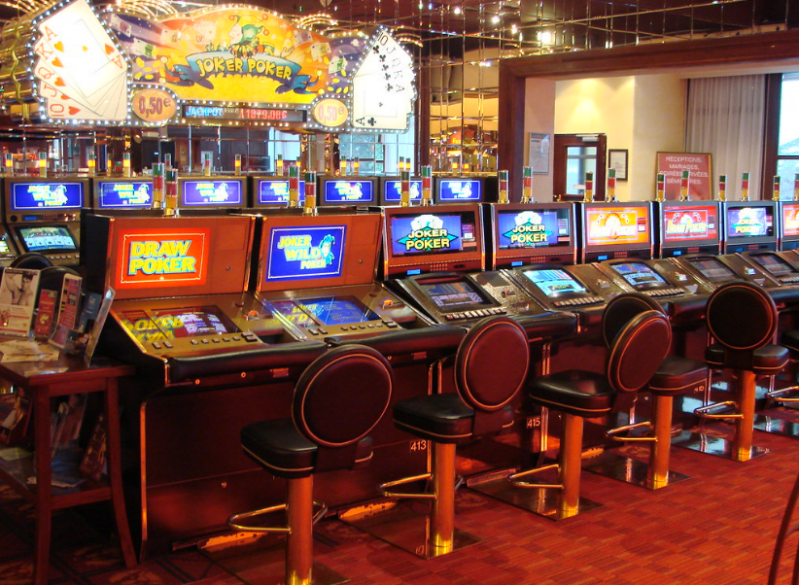
Gambling games have long captivated people’s attention, drawing players into a universe filled with luck, planning, and the allure of excitement. Each activity is painstakingly crafted not just for enjoyment, but also to evoke specific emotional responses that keep players involved and committed. Understanding the reasons behind these designs reveals much about how psychology plays a vital role in the gaming experience.
From the dazzling lights and vibrant sounds to the intricate layering of guidelines and payoffs, casino games are designed to create an atmosphere of anticipation and eagerness. Game designers leverage behavioral strategies to influence player behavior, whether through the use of winning opportunities, close-call situations, or social interactivity. By examining these factors, we can better appreciate how casino games fulfill not just a need for entertainment, but deeper psychological needs for adventure and uncertainty.
Grasping Player Behavior
Casino games are designed with a deep grasp of gamer psychology, which is crucial for attracting and holding players. The excitement of the game, coupled with the hope of winning, creates a strong draw. Game designers utilize elements like sonic elements, dynamic graphics, and captivating gameplay to seize attention and elicit emotional responses. These sensory elements enhance the total environment, making players feel more invested in the game.
Another notable aspect of player behavior is the notion of risk and reward. Casino games often weigh high-risk scenarios with the potential for substantial rewards, which can result in the occurrence known as near-miss experience. When players come within reach to winning, the brain produces dopamine, reinforcing their behavior and motivating them to keep playing in search of that hard-to-reach win. This cycle of wish and letdown plays a critical role in how games are structured and promoted.
Lastly, community aspects also play a pivotal role in player behavior at casinos. Many games are designed to be played in groups or alongside other players, creating a sense of togetherness and communal experience. The community engagement inherent in games like poker enhances enjoyment and can lead to extended gameplay. Designers take advantage on this by crafting environments that encourage players to stay, connect, and revisit, making the overall casino experience more appealing.
The Role of Imagery and Sound
Visuals and audio play a significant role in enhancing the player’s experience within casino games. Designers utilize bold colors, eye-catching graphics, and captivating animations to capture gambler’s attention and hold their focus. The use of motifs, such as adventure or opulence, helps create an enthralling atmosphere that takes players into a different world. casino zonder cruks snelle uitbetaling By connecting to the senses, these elements contribute to a intensified emotional response, prompting players to engage more profoundly with the games.
Audio design is just as important in enhancing the overall experience of casino games. The combination of background music, audio effects for winning combinations, and environmental noises creates an sound landscape that keeps players enthralled. Audio cues associated with wins, such as ringing bells or festive music, evoke feelings of thrill and satisfaction, encouraging players to keep playing. These audio cues are strategically placed to enhance the thrill of the game and create a more immersive experience.
Moreover, the synchronization of visuals and sound is essential for supporting the game’s overall theme and atmosphere. Each element should align seamlessly to create a cohesive experience that pulls players in. The effective use of this integration not only improves user satisfaction but also boosts the likelihood of repeat play, as players become more engaged in the captivating world that the gambling games offer. This thoughtful combination of visuals and audio ultimately enhances player involvement and commitment.
Reward Structures and Participation
The development of casino games significantly depends on reward systems to ensure participants engaged and returning for additional experiences. These structures are rooted in psychological theories that take advantage of human behavior and desire. Players are often driven by the excitement of winning, which is reinforced by immediate feedback through the game structure’s mechanics. This instant gratification not just improves the gaming experience but also fosters a feeling of achievement, encouraging players to keep playing in hopes of bigger rewards.
Gaming establishments implement various incentive systems, such as jackpots, bonuses, and increased rewards, to captivate participants. These elements create a level of excitement that sustains interest. Additionally, the unpredictability of results plays a crucial role in keeping interest. The intermittent reinforcement schedule, where wins are random but happen often enough, keeps participants on edge and driven to continue participating. This loop of anticipation and expectation is foundational to the effectiveness of gambling experiences.
In addition, community aspects, such as competitive events and multiplayer features, boost the participation factor by leveraging the desire to compete of participants. The communal aspect of playing with others can amplify the excitement of success and create a sense of community within the casino. By combining these social dynamics with efficient incentive structures, gambling experiences don’t just provide entertainment but also foster a deeper connection among participants, solidifying their commitment to the overall experience.
